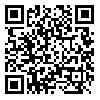Volume 21, Issue 1 (4-2018)
Hakim 2018, 21(1): 28-40 |
Back to browse issues page
Download citation:
BibTeX | RIS | EndNote | Medlars | ProCite | Reference Manager | RefWorks
Send citation to:



BibTeX | RIS | EndNote | Medlars | ProCite | Reference Manager | RefWorks
Send citation to:
Nikravan A, Ahmadi A M. Equality and Equity in Utilization of Health Services in Iran; Indirect Standardization Approach. Hakim 2018; 21 (1) :28-40
URL: http://hakim.tums.ac.ir/article-1-1855-en.html
URL: http://hakim.tums.ac.ir/article-1-1855-en.html
1- , a.nikravan@srbiau.ir
Abstract: (5209 Views)
Equality and Equity in Utilization of Health Services in Iran; Indirect Standardization Approach
Aniseh Nikravan (PhD)1*, Ali Mohammad Ahmadi (PhD)21Department of Health Economics, Faculty of Medical Sciences and Technologies,
Science and Research Branch, Islamic Azad University, Tehran, Iran
2Research Institute of Economics, Tarbiat Modares University, Tehran, Iran
Science and Research Branch, Islamic Azad University, Tehran, Iran
2Research Institute of Economics, Tarbiat Modares University, Tehran, Iran
Abstract
Introduction: The achievement of equitable system in the form of “equal health services for equal needs” are important goals of policy makers. Therefore, measurement of inequity in utilization of services and distinguishing it from equality is very important.
Methods: In this study, equity and equality in health care utilization are estimated by using a survey of health services utilization data set in 2008, which is done by the Ministry of Health and Education Medical and applying indirect standardization method. This is performed in Stata software suite.
Results: Inequality index before standardization indicates that there are slight inequalities between different income groups except health care services for general practitioner, health center, dental services, and services which are offered at private clinics. However, the expected need index indicates that more needs are concentrated among the poor. Thus, it is expected that they utilized more services. However, results of estimation after standardization of inequality and measuring inequity indicates that distribution of health services utilization, particularly outpatient services, is pro-rich and there is horizontal inequity in favor of high income groups.
Conclusions: The concept of inequality is according to the principle that individuals have different needs and different demands in using health services. However, the concept of inequity was achieved according to equal needs. In this case, the difference in utilization is considered as inequity. As a result, the index of inequality cannot be applied for the study of inequity.
Keywords: Utilization; Equality; Equity; Indirect Standardization
Introduction: The achievement of equitable system in the form of “equal health services for equal needs” are important goals of policy makers. Therefore, measurement of inequity in utilization of services and distinguishing it from equality is very important.
Methods: In this study, equity and equality in health care utilization are estimated by using a survey of health services utilization data set in 2008, which is done by the Ministry of Health and Education Medical and applying indirect standardization method. This is performed in Stata software suite.
Results: Inequality index before standardization indicates that there are slight inequalities between different income groups except health care services for general practitioner, health center, dental services, and services which are offered at private clinics. However, the expected need index indicates that more needs are concentrated among the poor. Thus, it is expected that they utilized more services. However, results of estimation after standardization of inequality and measuring inequity indicates that distribution of health services utilization, particularly outpatient services, is pro-rich and there is horizontal inequity in favor of high income groups.
Conclusions: The concept of inequality is according to the principle that individuals have different needs and different demands in using health services. However, the concept of inequity was achieved according to equal needs. In this case, the difference in utilization is considered as inequity. As a result, the index of inequality cannot be applied for the study of inequity.
Keywords: Utilization; Equality; Equity; Indirect Standardization
Please cite this article as follows:
Nikravan A, Ahmadi AM. Equality and Equity in Utilization of Health Services in Iran; Indirect Standardization Approach. Hakim Health Sys Res 2018; 21(1): 28- 40
*Corresponding Author:Science and Research Branch, Islamic Azad University, Daneshgah Blvd., Simon Bulivar Blvd., Tehran, Iran.
Tel: +98-9124065882, E-mail: a.nikravan@srbiau.ir
*Corresponding Author:Science and Research Branch, Islamic Azad University, Daneshgah Blvd., Simon Bulivar Blvd., Tehran, Iran.
Tel: +98-9124065882, E-mail: a.nikravan@srbiau.ir
Type of Study: Original |
Subject:
General
Received: 2018/09/5 | Accepted: 2018/09/5 | Published: 2018/09/5
Received: 2018/09/5 | Accepted: 2018/09/5 | Published: 2018/09/5
Send email to the article author
| Rights and permissions | |
 |
This work is licensed under a Creative Commons Attribution-NonCommercial 4.0 International License. |





